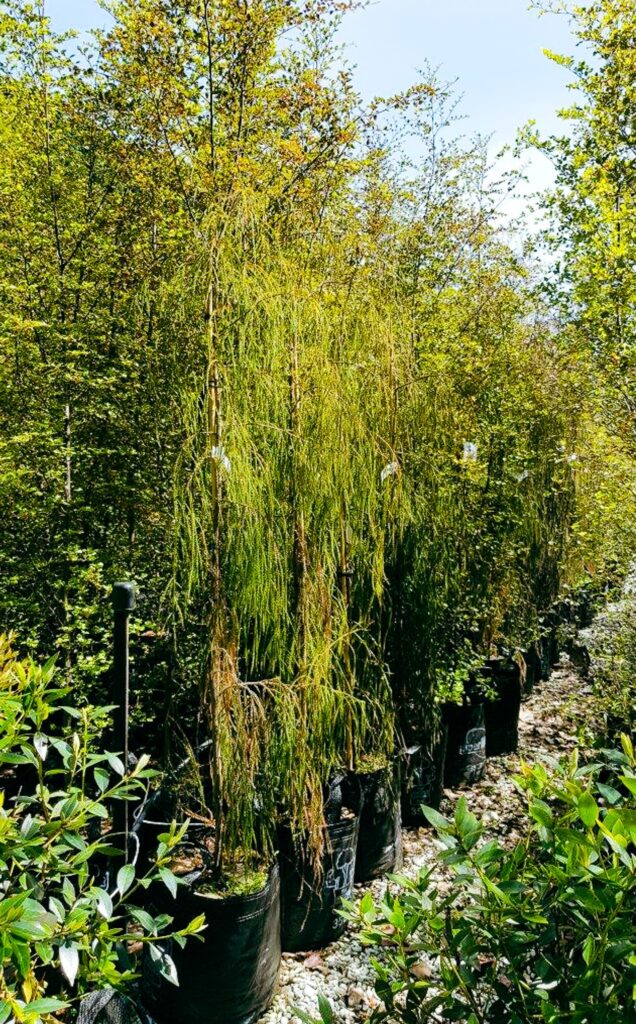Why planting is important for Matariki
Many of our public holidays seem to have a connection to trees and nature. There’s the Easter Egg hunt, where unsuspecting branches and bushes hide the chocolate spoils from soon to be very messy little fingers. It’s not unusual for a ceremonial tree to be planted on the King’s Birthday. And then there’s Matariki, a public holiday with the strongest link to plants despite much of the focus being on the night sky.

Once upon a time, Māori communities would plant a sacred garden at the rising of the Matariki. This is a notion we appreciate, as we often give meaning and memories to plants and trees. It’s part of a deeper connection with nature and there’s something entirely wonderful about sitting in the shade of a tree planted by a loved one.
Photo: DACRYDIUM cupressinum – Native Rimu foliage close-up.
Planting trees (or te whakato rākau) signifies new beginnings and looking forward. It’s an important part of Matariki celebrations, which is a time to look back, look inside, and then look forward. Which brings us to this – we hope you enjoy Matariki and everywhere you look, you see the smiles of family and friends. Now to this week’s tree, which is a protected native that has a special place in New Zealand hearts and history…
Dacrydium cupressinum – Native Rimu
Known to live 500+ years, Rimu trees are famed for their many uses:
– Rimu medium density softwood was used to fashion canoes and tools, then furniture and houses;
– Milling Rimu is no longer allowed and logging of Rimu on public land is forbidden, although the practice continues on some private land;
– Rimu bark was used to treat burns and cuts, helping heal the injured;
– It also provided a different type of ‘medication’, with the bark being used as an ingredient in the beer drunk by Captain Cook’s men;
– Wildlife also favours the Rimu, with the fruit a favourite of the Kākā and Kererū, while moreporks/Ruru enjoy taking a break and resting on the branches.
Photo: DACRYDIUM cupressinum – Native Rimu in 35Lt container, 2m+ height, 7-8 years old.

If we’re not trying to eat, carve or brew beer from the Rimu, we can step back and enjoy its impressive form. By the way – Rimu can be male or female. You can tell by the foliage as the female trees are softer, whereas the males are more prickly. Best we say no more about that.
Photo: Linette, Easy Big Trees Sales Manager, checking on the foliage of the 3Lt container Native Rimu, 1m+ height, 3-4 years old . She says it’s female 🙂
Matariki holiday is celebrated next Friday, 28th of June, and we will be closed.

Archives
- December 2024
- November 2024
- October 2024
- September 2024
- August 2024
- July 2024
- June 2024
- May 2024
- April 2024
- March 2024
- February 2024
- January 2024
- December 2023
- November 2023
- October 2023
- September 2023
- August 2023
- July 2023
- June 2023
- May 2023
- April 2023
- March 2023
- February 2023
- January 2023
- December 2022
- November 2022
- October 2022
- September 2022
- August 2022
- July 2022
- June 2022
- May 2022
- April 2022
- March 2022
- February 2022
- January 2022
- December 2021
- November 2021
- October 2021
- September 2021
- August 2021
- July 2021
- April 2021
- March 2021
- February 2021
- January 2021




